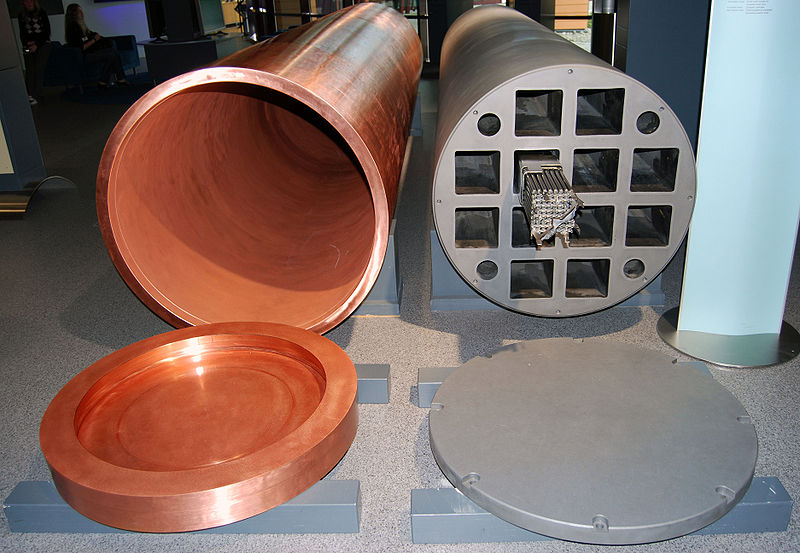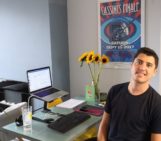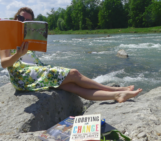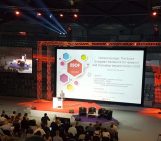Following Science in Public 2013 I had the pleasure of talking to Catharina Landström about the social and technical challenges to the geological disposal of high-level radioactive waste…
Could you introduce yourself and let us know what propelled you into a project looking at the issues surrounding geological disposal of radioactive waste?
Specialising in Science and Technology Studies (STS) I use qualitative social science methods to examine the role of science in the governance of environmental problems. Since coming to the UK from Sweden in 2007 I have worked in projects addressing three different environmental issues: flooding, climate change and the geological disposal of radioactive waste.
 I work in a project called InSOTEC (International Socio-Technical Challenges for implementing geological disposal). It’s a European social science project with links to natural science and engineering. The InSOTEC project brings to the issue of geological disposal a perspective that emphasises the intertwinement of social and technical processes. This approach is beginning to gain ground among the technical experts on radioactive waste disposal as well.
I work in a project called InSOTEC (International Socio-Technical Challenges for implementing geological disposal). It’s a European social science project with links to natural science and engineering. The InSOTEC project brings to the issue of geological disposal a perspective that emphasises the intertwinement of social and technical processes. This approach is beginning to gain ground among the technical experts on radioactive waste disposal as well.
What makes a somewhere a suitable site to dispose of high-level radioactive waste?
The idea of a suitable site has changed over time. Originally the notion of geological disposal was based on the two features of geological containment and geographic isolation. In the 1970s scientific and engineering experts set out to find the most impermeable rock bed, in places far from human settlements, so that governments could build geological disposal facilities. However, the experts found that geology was not as perfectly suitable as previously thought; there were fissures and water everywhere. Simultaneously governments found these top-down strategies were met with vigorous public opposition.
However, the realisation that geology was always going to be imperfect prompted research into engineered barriers, i.e. ways to compensate for the permeability of the bedrock through technology, such as the Swedish KBS 3 concept. This uses a copper container for the waste and is expected to maintain its integrity for many millennia. The development of engineered barriers to assist the bedrock greatly increased the number of potential sites and made it possible to look for those that were politically feasible.
What steps are involved in establishing geological disposal site?
Siting strategies range from programs that invite local communities to express interest in hosting a facility, to policies allowing local communities to veto siting proposals.
The UK government adopted a fully voluntaristic policy, called Managing Radioactive Waste Safely (MRWS), in 2008. The MRWS White Paper outlines a staged process in which local authorities have the right to withdraw from the process up until the start of construction. This is how it works:
- The process begins when a local community (one or several collaborating local authorities) submits an expression of interest.
- This is followed by a scientific unsuitability screening to establish whether there are any known features that would make the entire area unsuitable (such as mineral resources that may become targets of mining operations).
- If the area is not found unsuitable there will be practical and economical support for the community to deliberate before deciding whether to participate further.
- If the local authority decides to participate, the next step is to do desk-based studies in the area, followed by another decision on whether to proceed.
- If the local authority decides to continue, geological surface investigations will be carried out, including test drilling.
- If a suitable site is identified in the area, the local authority would have to take a decision about whether a disposal facility should be constructed. If they decide to proceed, construction would begin. Up until this point the community has the right to withdraw.
It is important to understand that even if a local community wants to proceed with the project at every decision point, it might not be possible to build a facility. Although engineered barriers have broadened the possibilities, some areas will not be geologically suitable and this cannot be known until geological investigations have been carried out.
As is clear from this outline, the siting process will take time. Nobody knows exactly how long, but we are talking about decades, and if a final decision to go ahead with a facility is taken, the actual design and construction remains. Estimates suggest that the emplacement of waste could perhaps begin 40 years after an expression of interest, if everything goes according to plan and to schedule.

An example of an engineered barrier – the Sweedish KBS 3 capsule for nuclear waste. (Credit: Wikimedia Commons user kallerna)
The disposal of nuclear waste can be a controversial topic – how do you keep the local community and other stakeholders involved when investigating if an area is suitable?
There is a plan for this. The Committee on Radioactive Waste Management (which developed the MRWS policy) looked at how other countries had made progress with radioactive waste disposal and learned how to facilitate local engagement democratically, structurally and financially:
- Any decision to site a facility will be a positive one, taken by the democratically elected local authority. In the MRWS process it is not possible for the national government to impose their will on a local community.
- The policy stipulates that the local process will be undertaken by setting up ‘Community Siting Partnerships’ in which local authorities, stakeholders, the implementer (currently the Nuclear Decommissioning Authority (NDA)) and other interested parties will participate as equals. These partnerships will act as forums in which all questions and concerns related to the siting process will be discussed and addressed. This format has worked in other countries. It is sufficiently formal to ensure democratic participation, yet has the flexibility to accommodate new interested parties and explore any issues that arise.
- There will be ‘community benefits packages’, ensuring that host communities do not suffer any negative economic consequences in the process and that local people can take advantage of the concentration of science and technology expertise that the process demands.
Obviously these measures do not resolve conflicts, but they define a space for discussion, negotiation and learning which was totally lacking in the previous, top-down, expert led strategy that floundered in the face of public opposition.
You’ve done a lot of work relating to potential sites in the UK (in Cumbria), could you explain what stage this investigation has reached and why?
Three local authorities in Cumbria submitted expressions of interest in 2009. Together they formed a local partnership (the West Cumbria MRWS Partnership) that set out on a fact finding and public engagement mission in order to provide advice that would enable councils to decide whether they should participate further. This partnership explored the issue in great depth, probing scientific and technical issues, involving stakeholders and engaging with large numbers of local residents. The West Cumbria MRWS Partnership delivered its final report in 2012, concluding that there were no major obstacles to further participation in the siting process. However, the following year, when two of the local authorities voted for participating further, one voted against. This brought the process to a halt. Currently the government and the NDA are reviewing the process and trying to find a way forward.
What are the biggest challenges facing geological disposal of radioactive waste and how do you think we can overcome them?
The voluntary siting strategy evolved in response to local public protests against top-down approaches. That does not mean that all disagreements are resolved though. While voluntarism escapes some problems it will encounter new challenges – in light of the ‘no’ vote in Cumbria, some issues stand out to a social scientist. One is the challenge of changing perspectives, from siting to hosting. While siting a facility (finding a location in which to construct a geological disposal facility) is the major problem for the national government and the implementer, any local community involved in the process is likely to find that their challenge will be that of hosting it. They would, in practice, commit to having a 150-year process of experiment design and setup in their midst, then the experiment would be left to run indefinitely.
Moving the process to a specific location also changes the politics, as it becomes embroiled in existing local affairs. In some other countries this has been addressed by the implementer, establishing local field offices that provide information to local communities and keep both the government and the implementer informed about what is going on in the locality. Had there been such a communication office in Cumbria, they would probably have informed the government that it was not enough to ask the locals to trust the word of the current government that the Right of Withdrawal (RoW) would be upheld in future and that the community benefits would be settled when the time comes.
Two reasons for the Cumbria County Council’s no-vote were that there was no legal framework for the RoW, neither was there a firm definition of what the community benefits would be. From the perspective of a local authority it does not seem rational to trust the next eight (or more) national governments’ commitment to a right outlined in a 2008 White Paper and to maintain benefits that are only agreed verbally. For the host locality, the structure that ensures both the democratic process and the decision making rights of the local authorities needs to be inscribed in law because the process will take many generations of politicians and trust is not an heirloom.
Another issue is that, as solving the issue of radioactive waste disposal will take a long time, it is necessary to improve interim storage. Even if a local community expressed their interest today and a geologically suitable site is identified, emplacement of the waste would still lie several decades in the future. In the meantime there has to be safe and secure interim storage, which requires the best available scientific and engineering knowledge. In my view, this is the most pressing matter right now.
If you’d like to suggest a scientist for an interview, please contact Sara Mynott.




